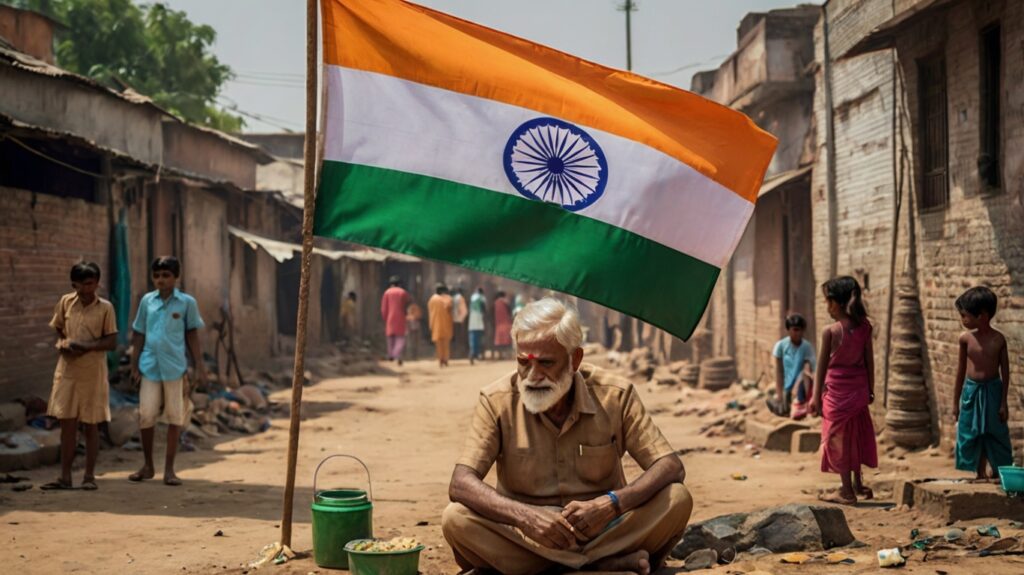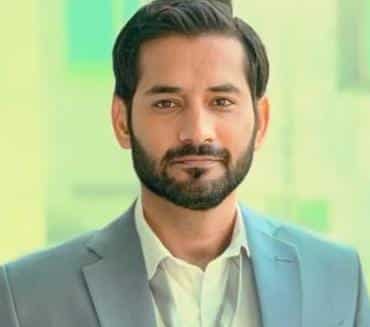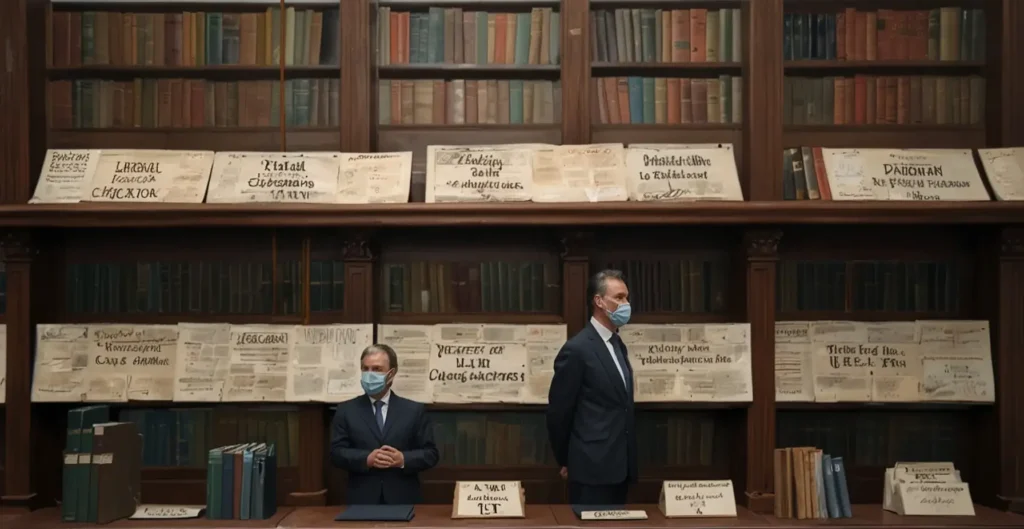The systematic evolution of social welfare in India may be grouped into different periods. Here we discuss in detail;
Ancient Period of Social Welfare in India (2500 BC-AD 1200)
The earliest reference to charity is to be found in the Rig Veda (Chap1 XIII, 2) which encourages charity by saying ”May the one who gives, shine the most”. Upanishad prescribed that every house holder must practice charity.
In ancient period, social welfare in India were performed by Yagnas[1]. Each one contributed his bit towards the Yagnas. The intention was the welfare of all. Yagnashalas were classrooms where men and women were taught the spirit of working together. Bhagavat Gita (The Holy Book) insists that the privileged class has a moral duty to serve the poor.
Such persons who served the society with all their ability were free from all sins. But those who cooked for themselves or produced for their own gain were eating sin (Gita chap-3-13) According to Manu it was his duty to feed his guests first, then his servant, he and his wife might eat last of all.
The evolution of Buddhism influenced the character of the Indian society from the tribal agricultural settlement to a class based agrarian economy. Buddhism laid great emphasis on punya and dana (charity). Guilds were important corporate organizations which performed a variety of economic and welfare functions during Buddhist period. Guilds provided social security to the oppressed class of the society. Bimbisara paid special attention to the development of roads and agriculture.
Ashoka developed a comprehensive system of social welfare in India. He appointed a superintendent to look after the welfare of women. The programs of social welfare in India were under the overall charge of High Commissioners of Charity (Dharma mahamathras).
Many reforms were introduced in the field of women’s welfare, rehabilitation of prisoners, rural development, free medical care, regulation of prostitution and provisions of public utilities like roads, wells, and rest-houses for travelers etc.
Kanishka gave liberal donation and grant for the construction of Buddhist Viharas, monasteries, stupas etc. These were the centers of learning and help to the needy people. During the Gupta period (the early 4th to the late 6th century CE) some more welfare activities executed. Harsha Vardhana was an enlightened ruler who established hospitals, dispensaries, orphanages and homes for the destitutes.
Medieval Period of Social Welfare in India
In the medieval period of social welfare in India, Malik Ali, a noble of Balban, was more generous in giving alms. Giyas-Udheen Thuglak was charitable and King Muhammud Gavan spent all his wealth on the poor and led a simple life. In the Mughal period Greece system of medicine was introduced by an Indian physician Unhammad. Unani medicine refers to the current kind of psychotherapy as ilaj-i-nafsani.
Humayun was the first Muslim king who made a bold attempt to prohibit the sati (burning widows on husband’s funeral) system. Akbar was the great ruler who, not only brought many reforms in Indian society but also abolished slavery in 1583. He introduced equality among the people irrespective of their class and religion. He established a policy of religious equality and he granted land for the benefit of Hindus, Sikhs and Parsees etc.
King Akbar implemented a thorough system of poverty alleviation. There were two distinct categories of poor relief. The initial measure was the provision of monetary assistance, on a regular basis, to individuals in need who presented themselves. Wazifas, which are financial allowances, were also provided to students. To mitigate the issue of beggary, he constructed three houses for individuals experiencing poverty. Aurangzeb was diligently devoted to the well-being of his people and maintained a modest lifestyle.
In 1745, psychiatric institutions were established in Bombay (Mumbai), subsequently followed by Calcutta (Kolkata) in 1784, and Madras (Chennai) in 1794. The necessity to create hospitals grew increasingly, initially to provide medical care and oversee the well-being of Englishmen and Indian’soldiers’ who were engaged by the British East India Company.
Modern Period of Social Welfare in India
In the modern period of social welfare in India, Raja Ram Mohan Roy was the greatest Indian of the 19th century. He was the morning star of Indian renaissance who sowed the seeds of religious and social reforms. He used his power and influence towards the abolition of Sati and he was in favour of widow remarriage and female education.
Iswarchandra Vidya Sagar advocated widow remarriage, economic self-reliance, women’s education and prohibition of polygamy. It was with the joint effort of Mohan Roy and Vidyasagar that the Widow Remarriage Act was passed in 1856.
Professor Bal Shasthri Jain Bhaker of Bombay fought against the evil customs like Sati, female infanticide etc. and tried to frame laws to abolish these customs.
Gopal Hari Desh Mukh of Bombay promoted modern education, established dispensaries, maternity homes, orphanages etc. Sasipade Banerjee was a notable reformer of Bengal who worked for the cause of women’s education and widow remarriage. He arranged several marriages of widows and gave shelter to widows at his residence. Sir Sayyid Ahmed Khan played a prominent role for the education of women and to wipe out social evils among the Muslims.
The first legislation in the modern period of social welfare in India, known as the First Lunacy (Mental Illness) Act, often referred to as Act No. 36, was enacted in 1858 and subsequently revised by a committee convened in Bengal in 1888. Subsequently, the Indian Lunacy Act of 1912 was included in this legislative framework.
During the period spanning from the 1870s to the 1890s, a rehabilitation program was implemented at the Mysore Lunatic Asylum to cater to individuals suffering from mental disease. Subsequently, concurrently, occupational therapy departments were formed in nearly all of the lunatic asylums. The intervention implemented within the institution was referred to as ‘work therapy’.
Dr. Berkeley-Hill, the administrator of the European Hospital (now recognized as the Central Institute of Psychiatry (CIP), which was founded in 1918, had a profound interest in the enhancement of mental healthcare facilities throughout that decade. The persistent endeavors of Berkeley-Hill contributed to the augmentation of treatment and care standards while simultaneously influencing the government to modify the terminology from ‘asylum’ to ‘hospital’ in the 1920s.
Mahatma Gandhi became active in political as well as social fields in 1920. He symbolized the integration of political reform with social reform. He worked for the uplift of women, Dalits (a man from lower caste) and fought for the equality between men and women. He emphasized the need for freedom from evils along with political independence.
The contribution of Gandhi like Sarvodaya (development of all), Antyodaya (welfare of all), Non-violence struggle, Panchyathiraj (council of officials) are closely related with the philosophies of social work. Following the attainment of Independence in 1947, the establishment of General Hospital Psychiatry Units (GHPUs) was undertaken with the aim of enhancing the quality of medical services in existing hospitals.
Role of Organizations
The important organizations like; Brahma Samaj, Prarthana Samaj, Arya Samaj, Theosophical Society, Ramakrishna Mission, Muhammedan Anglo Oriental Society, etc. played significant role in the development of social work.
- The Brahma Samaj was established by Rajaram Mohan Roy with the primary objective of advocating for the eradication of Sati, fostering widow remarriage, and enhancing the well-being of women.
- The Arya Samaj was established in 1875 by Swamy Dayananda Saraswathy. He objected to the caste system and the practice of child marriage.
- According to historical records, the Muhammedan Anglo Oriental Society was established by Sir Sayyid Ahammed Khan.
- The establishment of the Theosophical Society took place in 1881 in Madras, by Madame Blavatsky and Colonel Olcott.
- Ramakrishna Mission founded by Swami Vivekananda in1897 started its programs with education, treatment and general help.
- Gopal Krishna Gokhale established the Servants of India Society for social service.
Modern Social Work
Modern social work was introduced in India by Christian Missionaries in the beginning of the 19 century. When they started making houses for orphans and destitute, Indian social reformers like Sasipada Banerjee, Phule and Karve too started homes for the widows. Some social and religious associations like Arya Samaj, Prarthana Samaj and Ramakrishna Mission played significant roles in providing institutional services of social welfare in India.
Social Work Education in India
The development of social work in India begins with the formal training in social work in 1936 at Dhorabji Tata School of Social Work at Mumbai. Now it is a deemed university named Tata Institute of Social Sciences (TISS). The initial position of psychiatric social worker was established in 1937 under the child guidance clinic operated by the Dhorabji Tata School of Social Work. This particular writing is often regarded as the earliest recorded evidence of social work activity within the mental health profession in India.
In 1948, Gauri Rani Banerjee, who received her education in the United States, commenced a postgraduate program in medical and psychiatric social work at the Dhorabji Tata School of Social Work (now known as TISS). The initial appointment of a psychiatric social worker who had received formal training occurred in 1949 inside the adult psychiatry section of Yerwada Mental Hospital in Pune.
In Kerala, the first school of social work training was started in 1954 at Sacred Heart College, Thevara, which later shifted to Rajagiri College of Social Science, Kalamassery. At present, a number of universities and institutions are offering graduate, post graduate, M. Phil and Ph. D level training in social work.
The introduction of social work at higher secondary level resulted in many changes in the field of social work training and practice in Kerala. In a developing country like India, social workers have a major role in the socio-economic, cultural, health and related areas.
Based on the advice of the Mental Health Advisory Committee, Ministry of Health, Government of India, the Department of Psychiatric Social Work was established by NIMHANS in 1966. Subsequently, a two-year Postgraduate Diploma in Psychiatric Social Work was launched in 1968. The course received a name change in 1978, adopting the title of MPhil in Psychiatric Social Work.
Following this, a doctoral program was launched. The initiation of the Diploma in Psychiatric Social Work at the European Mental Hospital in Ranchi (now CIP) in 1970 was a direct result of the proposals put out by the Mudaliar committee in 1962.
The major associations of social work are;
- NAPSWI (National Association of Professional Social Workers in India)
- ASSK (Association of Schools of Social Work in Kerala)
- KAPS (Kerala Association of Professional Social Work).
Mental Health Initiatives
In many regions around the nation, social workers were employed inside mental health treatment settings like;
- In 1956 at a mental hospital in Amritsar,
- In 1958 at a child guidance clinic of the college of nursing,
- In Delhi in 1960 at the All India Institute of Medical Sciences
- In 1962 at the Ram Manohar Lohia Hospital.
- The Madras Mental Hospital, presently known as the Institute of Mental Health, enlisted the services of social workers in 1960 to facilitate communication and collaboration between doctors and their patients.
- The social work position was established at the NIMHANS in 1961. Within these particular contexts, the psychological dimension of treatment was specifically addressed.
In India, an innovative effort was initiated in 1975 with the aim of integrating mental health treatments with general health services. The National Mental Health Program (NMHP) was established and instituted by the Ministry of Health, Government of India in 1982. The aforementioned analysis was conducted in 1995, leading to the establishment of the District Mental Health Program (DMHP) in 1996.
The primary objective of this program was to facilitate the integration of mental health treatment with public health care. The aforementioned approach has been successfully applied throughout all states, resulting in a total of 125 DMHP locations in India at present. The National Human Rights Commission (NHRC) conducted comprehensive and rigorous evaluations of mental institutions in India during the years 1998 and 2008.
Allocation of Subjects to Department of Social Welfare in India
The subjects allocated to the Department of Social Welfare in India need also to be viewed in the context of the consecutive Five Year Plan policies and programs. Although a separate social welfare sector has been in existence ever since the beginning of the First Five Year Plan (1951-56), a separate Department of Social Welfare in India came into being only after about thirteen years.
The Department of Social Welfare in India was raised to the status of an independent Ministry on 24 August 1979 and was placed under the charge of a Cabinet Minister. This opportunity was not, however, availed of to regroup or reallocate subjects related to social welfare from amongst different Ministries. The subjects allocated to the Ministry of Social Welfare covered;
- Child welfare and development
- Women’s welfare and development
- Welfare of the physically handicapped
- Social defense
- Social welfare planning and research, etc.
The Ministry provides general direction for social welfare in India such as; policy formulation, promoting legislation and amendments to legislation, review of welfare legislation, implementation of schemes, promotion and assistance to voluntary effort and coordination.
- Social education, adult education and youth welfare activities (Ministry of Education and Culture); welfare of labor (Ministry of Labor)
- Legal aid to the poor (Department of Legal Affairs, Ministry of Law, Justice and Company Affairs)
- Relief and rehabilitation of displaced persons (Department of Rehabilitation, Ministry of Supply and Rehabilitation).
Allocation of Subjects to Ministry of Social Justice and Empowerment
- Social Welfare in India encompasses several aspects, such as comprehensive planning, research, project development, evaluation, statistical analysis, and training.
- International agreements with other nations pertaining to social defense, as well as references from the United Nations Organization about crime prevention and the lawful treatment of criminals.
- It focuses on the provision of institutional and non-institutional services aimed at fostering the care and development of children in need, namely orphans and underprivileged children.
- The provision of education, training, rehabilitation, and social services for those with physical and mental disabilities.
- Established by the National Institute for the Physically Handicapped and Mentally Retarded.
- The rehabilitation of individuals with impairments and the rehabilitation of those with mental illness.
- The National Centre for the Blind, which encompasses the Central Braille Press located in Dehra Dun.
- It examines the Training Centre for the Adult Deaf and the School for partially deaf children located in Hyderabad, as well as the Model School for Mentally Retarded Children situated in New Delhi, together with other national institutes.
- It encompasses research, assessment, training, information sharing, and technical assistance pertaining to many aspects of social defense.
- All aspects pertaining to alcoholism and substance misuse, as well as the recovery of individuals and families affected by addiction.
- Advocacy supports initiatives, especially voluntary endeavors, aimed at safeguarding the welfare of elderly individuals.
- This Ministry is responsible for managing charitable and religious endowments related to specific themes.
- The Department aims to facilitate and enhance voluntary engagement in issues assigned to its jurisdiction.
- This study examines the National Institute of Social Defense, the National Institute for the Physically Handicapped in New Delhi, and the National Institute for the Orthopedically Handicapped in Kolkata.
- The National Institute of Rehabilitation, Training, and Research is located in Cuttack.
- The National Institute for the Mentally Handicapped is located in Sekunderabad.
- The Ali Yavar Jung National Institute for the Hearing Handicapped is located in Mumbai.
- The National Institute for the Visually Handicapped is located in Dehradun.
- The National Handicapped Finance and Development Corporation is located in Faridabad.
- This paper examines the Artificial Limbs Manufacturing Corporation of India, located near Kanpur.
- The Rehabilitation Council of India Act, 1992 (34 of 1992) and the resultant Rehabilitation Council established under it.
- The legislation referred to is the Persons with Disabilities (Equal Opportunities, Protection of Rights and Full Participation) Act, 1995 (01 of 1996). The Act was subsequently abolished in 2016 by the enactment of the Rights of Persons with Disabilities Act (RPWD), which evolved from the 2014 Bill and aimed to provide benefits to a broader demographic of individuals with disabilities. The organizational entity is known as the National Trust for Welfare of Persons with Autism and Cerebral Palsy.
- The Chief Commissioner for Disabilities is responsible for overseeing the implementation of the Mental Retardation and Multiple Disabilities Act, 1999 (44 of 1999).
- The provision of scholarships to students belonging to Scheduled Castes (also known as untouchable or outcastes) and other Backward Classes is a critical aspect of educational support. This is the National Commission for Scheduled Castes.
Salient Features of Ministry
The Ministry of Social Justice and Empowerment will be the nodal (identified for specific services) Ministry for overall policy, planning and coordination of programs of development of Scheduled Castes and Other Backward Classes. With respect to sectoral programs and development schemes targeting these communities, the duty for policy formulation, planning, monitoring, evaluation, and coordination shall lie with the relevant Central Ministries, State Governments, and Union Territory Administrations.
Each Central Ministry and Department shall serve as the appointed nodal Ministry or Department responsible for its respective sector.
- Reports of the Commission to Investigate into the conditions of Backward Classes.
- National Commission for Safai Karamcharis and all matters pertaining thereto.
- The execution of the Protection of Civil Rights Act, 1995, and the Scheduled Castes and the Scheduled Tribes (Prevention of Atrocities) Act, 1989, effectively excludes the jurisdiction of the criminal justice system with respect to offenses specifically pertaining to Scheduled Castes.
Ministry of Women and Child Development
The Department of Women and Child Development was set up in the year 1985 as a part of the Ministry of Human Resource Development to give the much needed push to the holistic development of women and children. With effect from 30 January 2006, the Department has been upgraded to a Ministry under the independent charge of Minister of State for Women and Child Development.
Policy Initiatives
The Ministry has been executing the biggest and most distinctive programs of Integrated Child Development Services (ICDS) globally, which encompass a comprehensive range of services including supplemental nutrition, vaccination, health examination and referral services, as well as pre-school non-formal education. In addition, the Ministry is now executing Swayamsidha, an integrated initiative aimed at empowering women.
The coordination and monitoring of several sectoral initiatives are conducted in an effective manner. A significant portion of the Ministry’s initiatives are administered by non-governmental groups. There is a continuous effort to enhance the efficacy of non-governmental organizations (NGOs). The Ministry has implemented several significant policy measures in recent times, which include:
- Implementation of ICDS and Kishori Shakti Yojana on a global scale
- The initiation of a program for food targeting teenage females
- The establishment of the Commission for the Protection of Child Rights.
- Implementation of the Protection of Women from Domestic Violence Act.
Subjects Allocated to Ministry of Women and Child Development
Welfare of the Family
- It focuses the welfare of women and children, as well as the coordination of actions across various ministries and organizations in relation to this area.
- References from United Nations Organizations pertaining to the issue of trafficking of women and children.
- Provision of care for young children in pre-school, including early childhood education.
- It examines the National Nutrition Policy, National Plan of Action for Nutrition, and National Nutrition Mission.
- Endowments of a charitable and religious nature that are relevant to the issues assigned to this Department.
- Facilitation and advancement of volunteer endeavors pertaining to the areas assigned to this Department.
Implementation of;
- The Immoral Traffic in Women and Girls Act of 1956, with further amendments till 1986.
- The Indecent Representation of Women (Prevention) Act, 1986 (legislative number 60 of 1986).
- The Dowry Prohibition Act of 1961, legislation number 28 of 1961,
- The Commission of Sati (Prevention) Act, 1987 (3 of 1988) specifically excludes the jurisdiction of the criminal judicial system with respect to offenses falling under the jurisdiction of these Acts.
- The Infant Milk Substitutes, Feeding Bottles, and Infant Food (Regulation of Production, Supply and Distribution) Act, 1992 (41 of 1992) is being implemented.
- The synchronization of operations within the Cooperative for Assistance and Relief Everywhere (CARE)
- The scope of this project encompasses planning, research, evaluation, monitoring, project formulations, statistics, and training initiatives focused on the welfare and development of women and children. This includes the creation of a gender-sensitive database.
- UNICEF, sometimes known as the United Nations Children’s Fund,
- Central Social Welfare Board (CSWB),
- The National Institute of Public Cooperation and Child Development (NIPCCD)’s scholarly publication.
- The Board on Food and Nutrition
- The primary objective of the Food and Nutrition Board (FNB) is to facilitate the advancement and dissemination of subsidiary and protective foods. (ii) Extension of Nutrition Sciences.
- Enhancing Women’s Empowerment and Promoting Gender Equity.
- Women’s National Commission.
- The Rashtriya Mahila Kosh (RMK) in India
- The Juvenile Justice (Care and Protection of Children) Act, 2000 (56 of 2000).
- Administration of probation to juvenile criminals.
- Issues pertaining to adoption, the Central Adoption Resource Agency, and the Child Help Line (Childline).
- In 1960, the Children Act (60 of 1960) was enacted.
- In 1929, the Child Marriage – Restraint Act (19 of 1929) was enacted.
Evolution of Social Welfare Ministry in India
For social welfare in India three important dates occur in the evolution of the Ministry of Social Welfare in India. These are;
- 14 June 1964 when the Department of Social Security was created
- 24 January 1966 when the Department of Social Security was re-designated as Department of Social Welfare in in India.
- 24 August 1979 when the Department of Social Welfare in India was elevated to the status of an independent Ministry.
Although a separate social welfare sector has been in existence ever since the beginning of the First Five Year Plan (1951-56), a separate Department of Social Welfare in India came into being only after about thirteen years.
1956: The establishment of a Central Ministry of Social Welfare in India was advocated by the Indian Conference of Social Work (now Indian Council of Social Welfare) through the submission of a memorandum to the Prime Minister at that time.
1958: The Study Team on Social Welfare and Welfare of Backward Classes constituted in 1958 by the Committee on Plan Projects of the Planning Commission under the chairmanship of Smt. Renuka Ray pointed out inter-alia that various social welfare subjects are dealt with in different Ministries.
1964: The Department of Social Security was created
1966: The Department of Social Security was renamed as Department of Social Welfare in India.
1967: Administrative Reforms Commission suggested various subjects with the Department of Labor and Employment to constitute a Ministry of Labor, Employment and Social Welfare, Transfer of charitable and religious institutions from the Ministry of Law to the proposed Department and also to transfer child welfare from Social Welfare Ministry of Health, Family Planning and Regional Planning.
1979: The Department of Social Welfare in India was elevated to the status of an independent Ministry.
1985-86: The redesigning of the Ministry of Welfare resulted in its transformation into the Department of Women and Child Development and the Department of social Welfare in India. Concurrently, the Scheduled Castes Development Division, Tribal Development Division, and the Minorities and Backward Classes Welfare Division were transferred from the Ministry of Home Affairs, while the Waqf (endowment) division was transferred from the Ministry of Law, resulting in the establishment of the previously known Ministry of Welfare.
1998: The title of the Ministry was modified to the Ministry of Social Justice & Empowerment.
1998: The allocation of subjects to the Ministry of Social Welfare in India reveals that certain subjects, or substantial portions thereof, that are currently under the administration of other Ministries could potentially be overseen by the Ministry of Social Welfare in India. Examples of such subjects include social education, adult education, and youth welfare activities, which are currently administered by the Ministry of Education and Culture.
Additionally, the Ministry of Labor is responsible for the welfare of labor, while the Department of Legal Affairs within the Ministry of Law, Justice, and Company Affairs provides legal aid to the impoverished. Furthermore, the Ministry of Supply and Rehabilitation is tasked with the relief and rehabilitation of displaced persons.
1999: Following its dissolution, the Tribal Development Division underwent a transformation and became an independent Ministry of Tribal Affairs.
2007: The Minorities Division, in conjunction with the Wakf Unit, has been relocated from the Ministry and established as an independent Ministry.
Today’s Social Work in India
Presently, the field of social work is renowned for its rigorous and comprehensive methodology in comprehending and addressing societal issues. This phenomenon has resulted in the acknowledgment of poverty as being induced by social and economic factors that are deeply rooted in society policy, rather than being attributed to an individual’s moral flaws.
This trend also indicates a significant historical progression in the development of social work. Previously, social work was primarily focused on exerting social control, but it has now shifted its focus towards promoting social and personal empowerment. This shift is based on the fundamental principles of service, social justice, the recognition of the dignity and value of individuals, the significance of human relationships, moral integrity, and professional competence.
However, it should be noted that contemporary social workers do indeed participate in social control, as illustrated by child protection professionals. It is quite probable that a significant number of social workers would concur that there exists a persistent conflict between both influences within the field. An illustration of this may be observed in the ongoing dispute between structural social work and humanistic social work.
[1] Yagnas were a form of social welfare in ancient India, where the community came together to perform rituals that were believed to benefit everyone.






